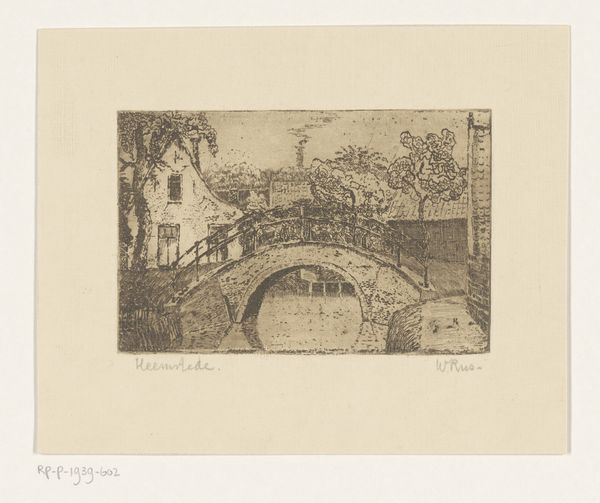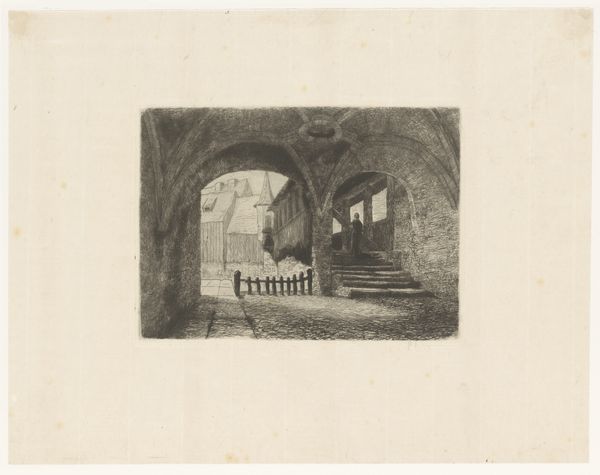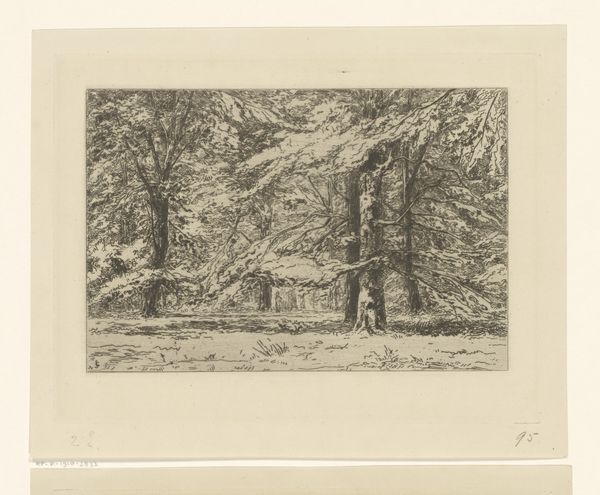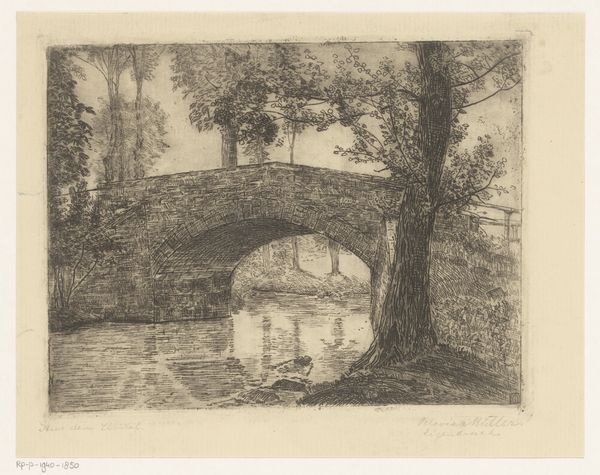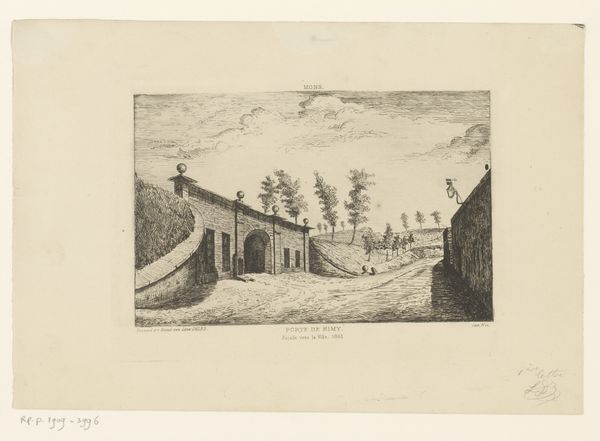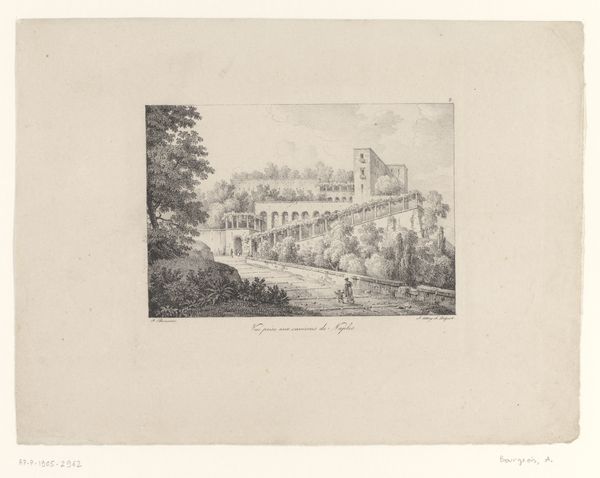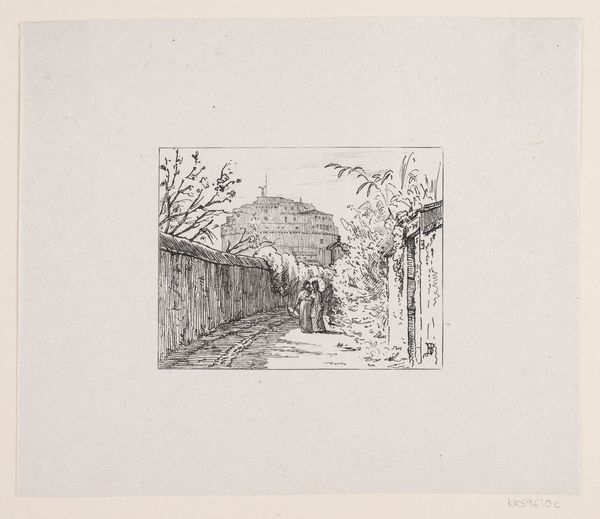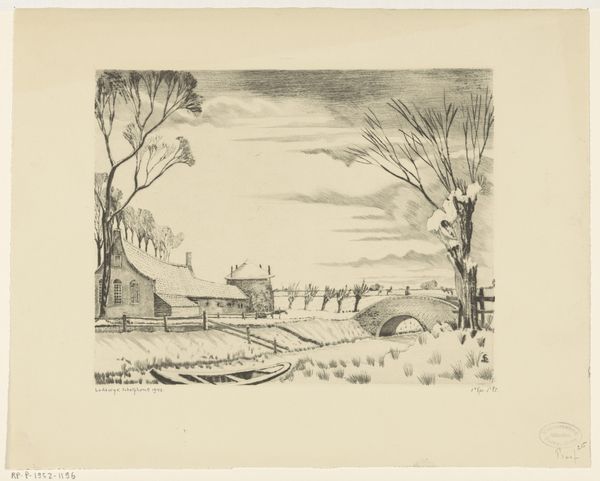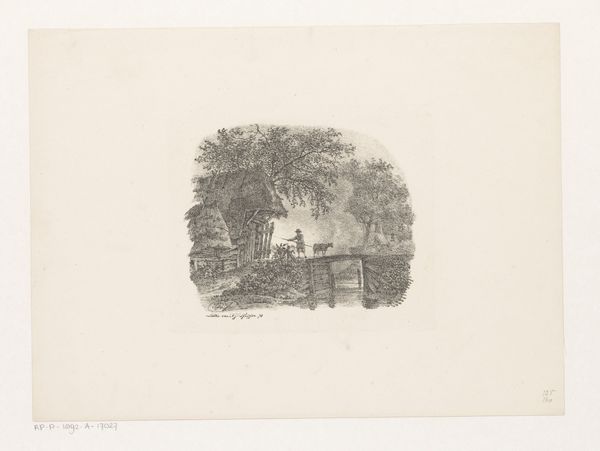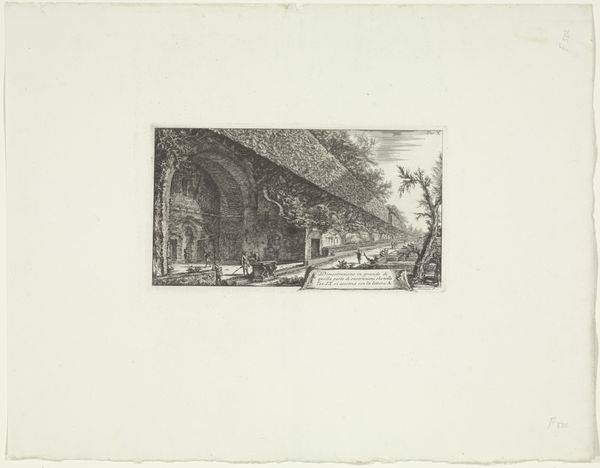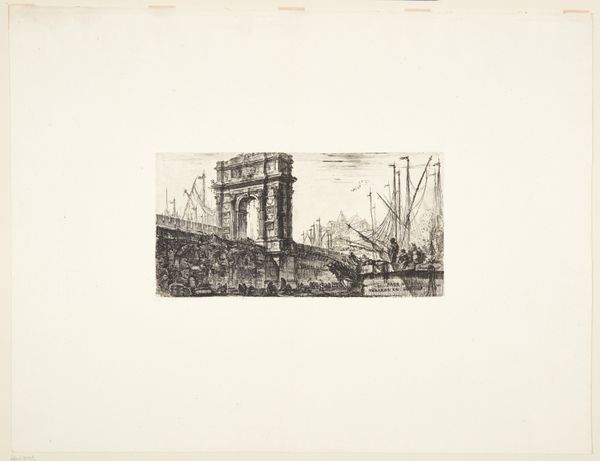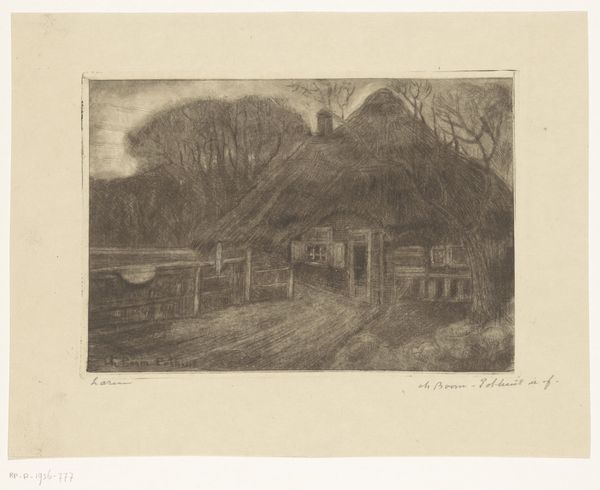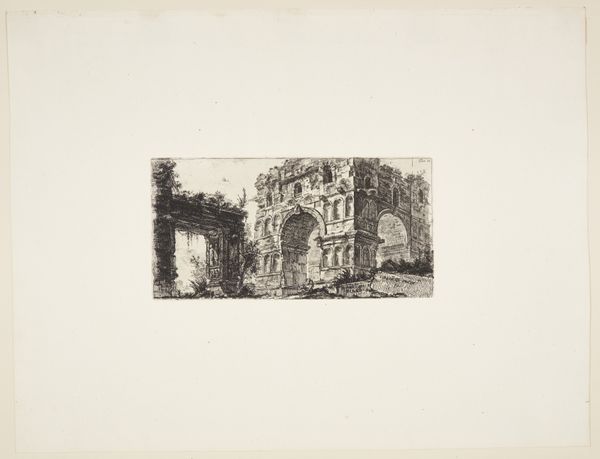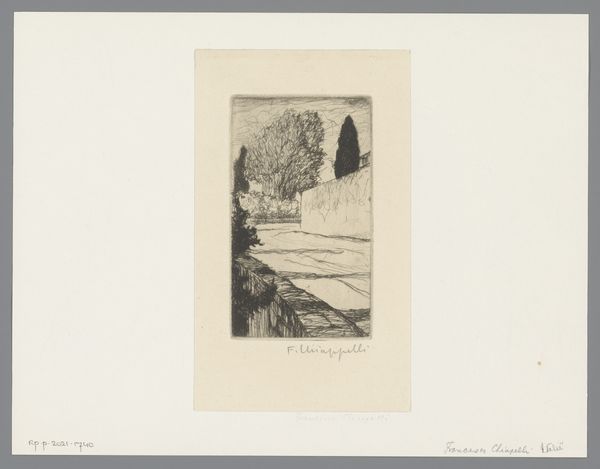
drawing, pencil
#
drawing
#
landscape
#
pencil
#
cityscape
Dimensions: height 300 mm, width 423 mm
Copyright: Rijks Museum: Open Domain
Curator: Here we have Cornelia Christina Johanna van Trigt-Hoevenaar’s drawing, "Kuiperspoort in Middelburg," likely created between 1864 and 1909, now residing here at the Rijksmuseum. It's rendered in pencil. Editor: It's wonderfully atmospheric, isn't it? The grayness lends the whole scene a kind of melancholy. A world rendered with soft graphite that appears almost haunted, like a place caught between sleep and waking. Curator: Indeed. What strikes me immediately is how the work reflects the increasing urbanization in the Netherlands during that period. Though quiet, the artist carefully delineates the architectural components against the encroachment of industrial modernity through that single point perspective. Editor: It is about transition, isn’t it? How society shifts its borders to incorporate the liminal. I keep wondering what function did this gateway serve, beyond physical entrance and egress? Was it a marker of privilege or perhaps even a segregation from within a complex system? Curator: Such gateways frequently held socio-economic meanings in a 19th-century urban fabric, simultaneously separating and regulating societal spheres. Consider, also, how the artist, as a woman, engages with what was predominantly a masculine sphere of landscape art at that time. Her focus is not on grand vistas but the quiet, lived spaces. Editor: I'm captivated by the way she captures the intimate intersection of the natural world and urban construction. There is an undeniable human quality, the ability of a drawing rendered in such simple grayscale, is profound. The perspective is inviting, but it doesn’t hide its complexity and raises critical awareness of class and gender. Curator: Precisely. It invites us to think about urban life and public space through a decidedly gendered lens. In exploring that very intersection between the urban structure and her personal interpretation of it. Editor: So, this drawing acts as a document of a period as much as it serves as a marker, pointing the way to considerations of space, accessibility, gender, and experience. I won’t see another cityscape drawing the same again. Curator: I completely agree. It highlights the power of these works to encapsulate the social complexities embedded within a seemingly simple landscape, forcing viewers to acknowledge how profoundly public and private realms can interlace.
Comments
No comments
Be the first to comment and join the conversation on the ultimate creative platform.
